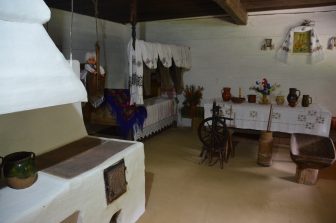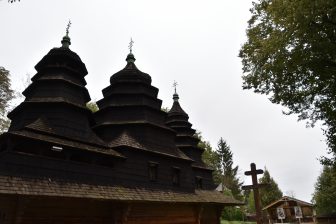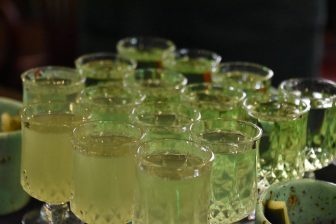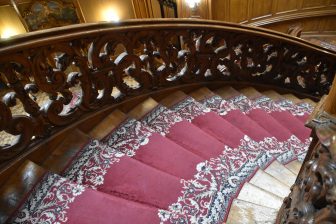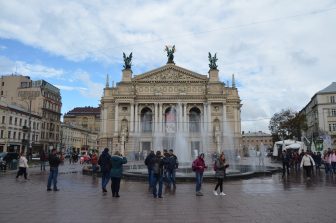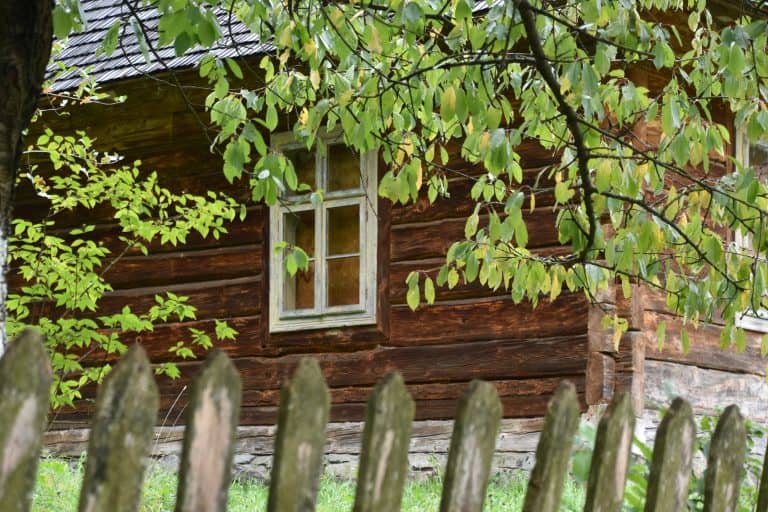
[ Sept.2018 ] In the town of Lviv in the west of Ukraine, first we visited the outdoor museum of the old wooden houses brought from villages in west Ukraine.
The guide of this museum took us around.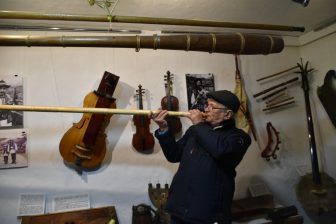
Apparently, there are as many as 100 buildings in this place and the first house we went in was the newest one.
One of the rooms was exhibiting musical instruments and the man demonstrated how to play them.
Then he encouraged all the visitors to try playing the percussion and other instruments, so we had an impromptu music concert.
The noise was horrible, but it was a fun.
The next house we went in was the oldest one in this museum, built in the 17th century.
There was only one room in this house and the guide explained that the couple slept on the bed while children and old people slept on the stove.
Sleeping on the stove was something we had heard about on Kizhi Island in Russia last year, too.
There were no chimneys in this house, so the room would have been full of smoke.
The reason why they did not have a chimney was that in those days, they placed a tax on chimneys.
We also visited the black church.
Because they painted some oil to reinforce the building, it is black.
This church is still functioning.
A part of western Ukraine is the Carpathian Mountains.
Before 
The punishment for stealing honey was severe and sometimes, even the death penalty was sentenced.
They organised a system in the community association to watch each other.
After looking around other things, we had a trial lesson for an easy print.
The woodblocks of some traditional patterns were already there and we just put some colours on and pushed it down to the cloth bag.
Apparently, this is a traditional way of decorating skirts or table covers and in those days they used the natural dye, such as ashes, though ours were strong acrylic colours.
Our friend, Alina, who organised our tour, was born in Lviv.
This museum was a sort of the back garden of her childhood house.
She told us an anecdote regarding this house.
Her grandparents were originally from Astrakhan in Russia, but because her grandfather was a soldier, they were sent to the Kamchatka Peninsula and lived there for a long time.
After that, they were sent to Lviv.
Because it so happened that it was the time that Polish people living in Ukraine had to move to Poland and vice versa, they were told to find a house to live in after any of the Polish family left.
The kindhearted grandmother found a large house, but gave it to the large family with children and they themselves chose a smaller flat.
There was lovely antique furniture in the flat that the Polish family could not take with them, so the grandmother used their savings to pay them for the furniture, which made the grandfather angry later when he knew that.
I remember that when we went to Turkey, I learned about the exchange between Turkish and Greek people, but I did not know that a similar thing happened between Ukrainian and Polish people.
It was the reality for Alina’s grandparents, so I suppose for her this is not a mere page of a history book.

